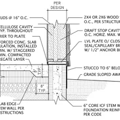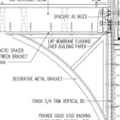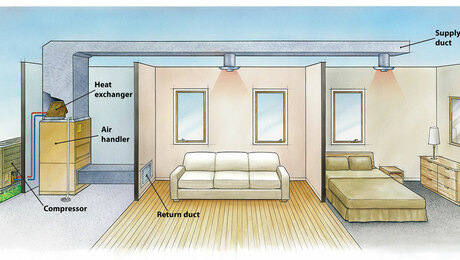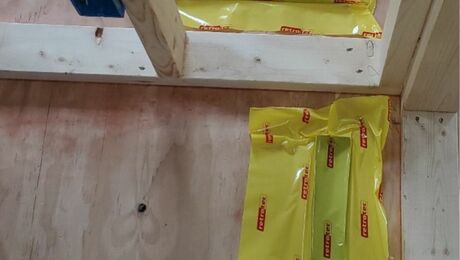Insulation location – walk out basement
We have a walkout basement, climate zone 6. While the underground portion we will have either rigid foam or spray insulation on the inside of the basement wall, where the wall is not covered by earth (walk out) would it be best to put the foam on the outside of the wall?
GBA Detail Library
A collection of one thousand construction details organized by climate and house part









Replies
Because concrete conducts heat readily, I usually keep all insulation on the interior, or sometimes all on the exterior. If you do some on one side and some on the other side, heat will flow through the concrete.
user5540,
I live in CZ6 and opted for 100% exterior insulation on my foundation and house. The termite problem is not here at my elevation (but closing in). Just the same I was very picky about removing wood scraps and papers from the perimeter excavation. I also covered the entire foundation insulation with Grace Bituthene to seal out water and bugs. I haven't dug up any sections to check, but I think the gooey adhesive would kill them after a few bites.
Michael is right about picking one side or the other. Each choice creates its own set of annoying details. If you are not going with continuous exterior insulation then the mismatch between siding and foundation insulation is a real issue. As to why I am in favor of insulating on the outside of foundations, check out the following thread.
"Why are roofs insulated more than walls?"
I tried to explain about half way down. Some disagree.
If this is a new build, I would go with all exterior rigid foam. If this is a retrofit, I would go with all interior. The reason is that I prefer to keep the masonry warm (for less potential freeze/thaw risk), which exterior insulation does. For a retrofit, interior insulation is far easier to do, since you don't have to escavate the exterior of the foundation wall. I prefer XPS for exterior (although EPS works too), and polyiso if insulating the interior. If you go with XPS on the exterior, try to get one of the newer varients that was manufactured using the new more benign blowing agents.
Bill